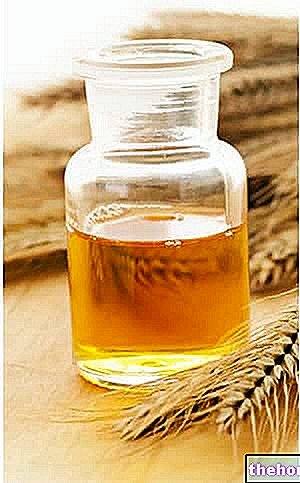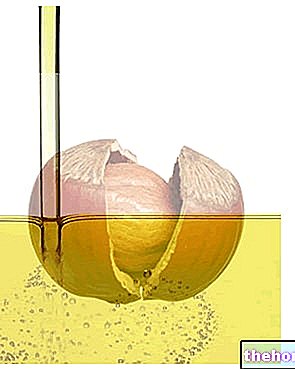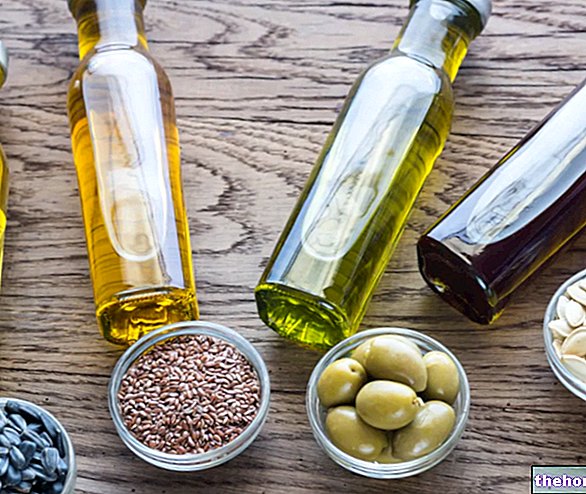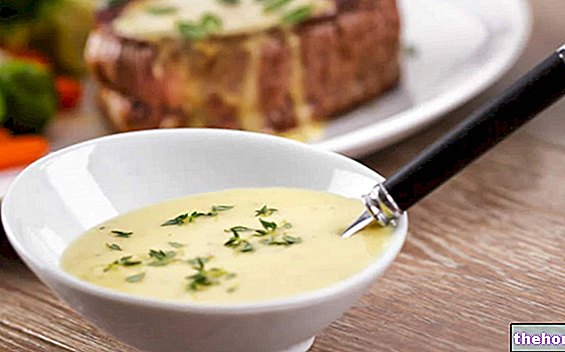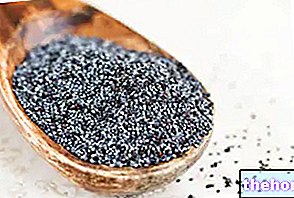Introduction: the olive oil
Olive: botanical aspects and cultivation
Composition of the ripe olive, nutritional properties
Olive harvest
Olive oil: chemical composition
Olive oil: properties and nutritional characteristics
Preparation of the olive oil
Conservation of olive oil
Pomace oil
Classification of olive oils, analysis and fraud
Olive oil as a laxative
Olive tree in herbal medicine - sea buckthorn
Cosmetic use: olive oil - Olive oil unsaponifiables - Olive leaf extract
The extraction of oil from olives is mainly carried out with three systems:
- by pressure (classic method, discontinuous)
- by centrifugation (modern, continuous method)
- percolation by selective filtration (modern, continuous method)
CENTRIFUGATION METHOD, continuous, modern, faster, but which eliminates a large part of the phenolic component.

The initial processes, cleaning, pressing and kneading, are the same as for the classic pressure method. After kneading, the olive paste is mixed with 30% of water (it is diluted, made more liquid) and enters a centrifugal extractor, which can be three-way (from which the pomace, the oil and the water of vegetation) or two-way (from which only the oil and vegetation water come out).
The centrifugal extractor, called decanter, is made up of an endless screw which, by rotating, brings the olive paste forward by compressing it; on one side the crushed pomace comes out, the liquid goes to the bottom and, while it goes down, there is also separation of the water (which comes out from below) from the oil (which comes out from above, because it is lighter).
The separation, however, is not clear and both are immediately subjected to centrifugation, to recover the small percentage of oil present in the water on one side, and to remove the small amount of vegetation water present in the oil from the other.
SELECTIVE FILTRATION: new generation method; fast and continuous, it allows to preserve the phenolic component.
Also in this case the initial stages of cleaning, milling and kneading are the same as for the previous methods. The malaxing is followed by an "extraction of the oil" by percolation.
The olive paste is placed on filter systems consisting of a steel or nickel grid, on which many mobile metal plates rest that penetrate the paste. Since these plates are made of metal, olive oil adheres to them much better than water; when they retract, they then let the retained oil drip. This technique exploits the different interfacial tension existing between metal and oil and between metal and water. The same phenomenon can be appreciated by immersing a knife or fork in water and oil.
A rubber scraper comb slides over these plates, which pushes the olive paste onto the filter system.
The droplets of oil then remain adhered to the metal plates and slide down, while the water does not stick and remains in the olive paste. The final result of this filtering technique is an "emulsion of very small droplets of vegetable water in oil. said must, which is subjected to centrifugation to obtain the definitive separation of the oil from the water. The pomace is also subjected to the same process, which makes it possible to obtain on the one hand a depleted bottom body and on the other a must, which by subsequent centrifugation will once again be separated into oil and vegetation water.

Ultimately, it is a more laborious process than the previous one, but which preserves the phenolic component of the oil, giving a product richer in antioxidant substances and less subject to rancidity.
Other Foods - Oils and Fats Peanut Butter Cocoa Butter Butter Greaves Wheat Germ Animal Fats Margarine Vegetable Cream Tropical Oils and Fats Frying Oils Vegetable Oils Peanut Oil Borage Oil Rapeseed Oil Krill Oil Poppy Seed Oil Seed Oil Pumpkin Avocado oil Hemp oil Safflower oil Coconut oil Cod liver oil Wheat germ oil Linseed oil Macadamia oil Corn oil Almond oil Hazelnut oil Walnut oil Olive oil Palm oil fish Rapeseed oil Rice oil Pomace oil Seed oil Soybean oil Grapeseed oil Extra virgin olive oil Sesame seeds and sesame oil Lard OTHER ARTICLES OILS AND FATS Categories Food Alcoholics Meat Cereals and derivatives Sweeteners Sweets Offal Fruit Dried fruit Milk and Derivatives Legumes Oils and Fats Fish and fishery products Salami Spices Vegetables Health recipes Appetizers Bread, Pizza and Brioche First courses Seconds pi acts Vegetables and Salads Sweets and Desserts Ice creams and sorbets Syrups, liqueurs and grappa Basic Preparations ---- In the Kitchen with leftovers Carnival recipes Christmas recipes Light diet recipes for Celiacs Recipes for Diabetics Recipes for Holidays Recipes for Valentine's Day Recipes for Vegetarians Protein Recipes Regional Recipes Vegan Recipes

